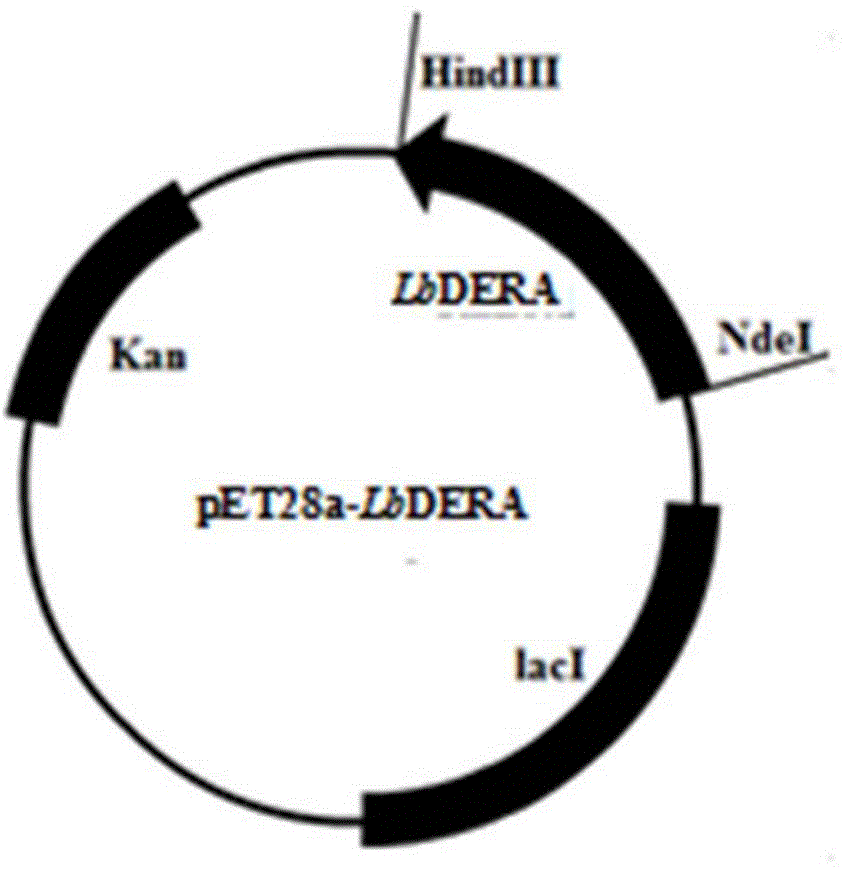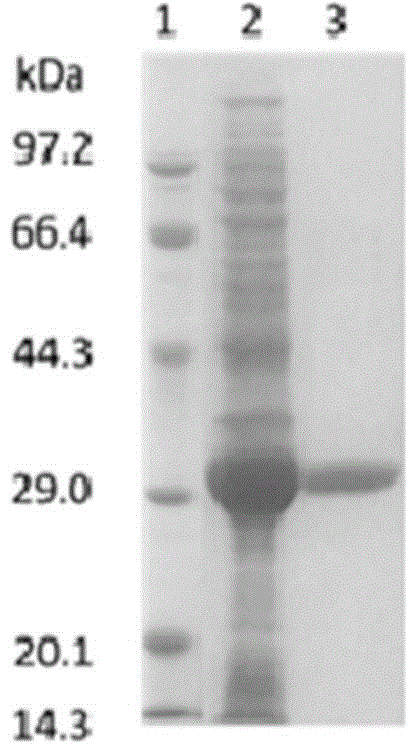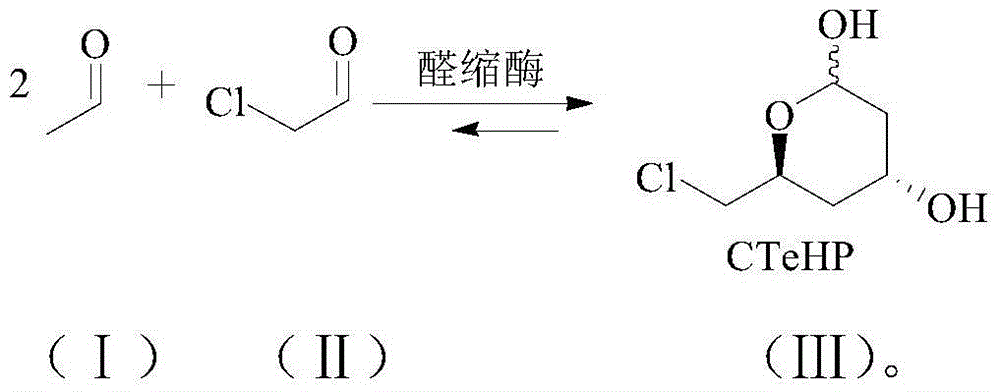Lactobacillus brevis, aldolase, genes of aldolase and method of preparing statin intermediate
A technology of Lactobacillus brevis and aldolase, which is applied in the field of Lactobacillus brevis, aldolase and its gene, and the preparation of statin intermediates, which can solve the problems of poor substrate tolerance and low enzyme activity
- Summary
- Abstract
- Description
- Claims
- Application Information
AI Technical Summary
Problems solved by technology
Method used
Image
Examples
Embodiment 1
[0043] Screening of Lactobacillus brevis CGMCC NO.10135
[0044] The Lactobacillus brevis CGMCC NO.10135 was derived from a soil sample collected by the Shanghai Botanical Garden and named ECU8302. Its separation includes the following steps: more than 100 soil samples from all over the country are screened for microorganisms, and an appropriate amount of soil samples are added to normal saline (0.9% NaCl) to obtain a suspension containing bacteria, and the suspension containing bacteria is diluted and coated separately LB medium plates, isolated single colonies. Inoculate the isolated single colonies into LB medium respectively, culture with shaking at 30°C for 24 hours, centrifuge the culture medium, collect resting cells, add to potassium phosphate buffer (100mM, pH 7.0) containing 100mM acetaldehyde and 50mM chloroacetaldehyde In the method, shake the reaction, detect the concentration of the aldol reaction product, and evaluate the activity of these bacterial strains in ...
Embodiment 2
[0053] Cloning of Aldolase LbDERA Gene
[0054] The strain CGMCC No.10135 was cultured in LB medium, and high-purity, large-fragment total genomic DNA was extracted by the cetyltrimethylammonium bromide (CTAB) method: add CGMCC No.10135 cells to liquid nitrogen Freeze, grind into powder, add 2×CTAB extraction buffer (100mmol / L Tris-HCl, pH 8.0, 20mmol / L EDTA, 1.4mol / L NaCl, 20g / L CTAB, 40mmol / L mercaptoethanol), keep warm at 65°C 10 minutes, shaking intermittently. Then add an equal volume of chloroform / isoamyl alcohol, gently invert the centrifuge tube to mix, centrifuge at 12,000 rpm for 10 min at room temperature, transfer the supernatant to another centrifuge tube, and then add an equal volume of chloroform / isoamyl to the supernatant alcohol, invert the centrifuge tube to mix, and centrifuge at 12,000 rpm for 10 minutes at room temperature. Transfer the upper aqueous phase to a new centrifuge tube, add an equal volume of isopropanol to the upper aqueous phase and mix wel...
Embodiment 3
[0061] Plasmid of recombinant LbDERA and preparation of recombinant bacteria and recombinant enzyme
[0062] With primer pair 1: forward primer 5'-ACGGAATTCATGACATTAACCACA-3' (as shown in SEQ ID NO.3), reverse primer 5'-CCCAAGCTTTTAGTAACCAGCTTT-3' (as shown in SEQ ID NO.4), using a polymerase The chain reaction technology amplifies the nucleotide sequence of LbDERA obtained in Example 1, and the obtained DNA fragment containing the LbDERA gene sequence is double-enzymatically digested with EcoRI and HindIII respectively, and then similarly passed through EcoRI and HindIII double enzymes The cut plasmid pET28a was connected to obtain the plasmid pET28a-LbDERA, and the schematic diagram of its construction can be found in figure 1 .
[0063] The obtained plasmid pET28a-LbDERA was transformed into Escherichia coli E.coli BL21, and the constructed recombinant Escherichia coli was inoculated into LB medium containing 50 μg / ml kanamycin sulfate, cultured with shaking at 37° C. ove...
PUM
 Login to View More
Login to View More Abstract
Description
Claims
Application Information
 Login to View More
Login to View More - R&D
- Intellectual Property
- Life Sciences
- Materials
- Tech Scout
- Unparalleled Data Quality
- Higher Quality Content
- 60% Fewer Hallucinations
Browse by: Latest US Patents, China's latest patents, Technical Efficacy Thesaurus, Application Domain, Technology Topic, Popular Technical Reports.
© 2025 PatSnap. All rights reserved.Legal|Privacy policy|Modern Slavery Act Transparency Statement|Sitemap|About US| Contact US: help@patsnap.com



